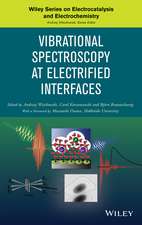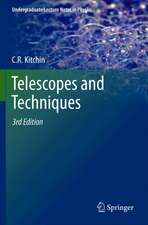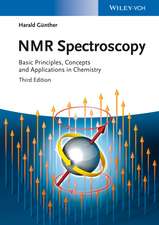Chemical Bonding and Spectroscopy in Mineral Chemistry
Autor F. J. Berryen Limba Engleză Paperback – 2 oct 2011
Preț: 390.63 lei
Nou
Puncte Express: 586
Preț estimativ în valută:
74.76€ • 81.17$ • 62.79£
74.76€ • 81.17$ • 62.79£
Carte tipărită la comandă
Livrare economică 23 aprilie-07 mai
Preluare comenzi: 021 569.72.76
Specificații
ISBN-13: 9789401086455
ISBN-10: 9401086451
Pagini: 340
Ilustrații: X, 326 p.
Dimensiuni: 155 x 235 x 18 mm
Greutate: 0.48 kg
Ediția:Softcover reprint of the original 1st ed. 1985
Editura: SPRINGER NETHERLANDS
Colecția Springer
Locul publicării:Dordrecht, Netherlands
ISBN-10: 9401086451
Pagini: 340
Ilustrații: X, 326 p.
Dimensiuni: 155 x 235 x 18 mm
Greutate: 0.48 kg
Ediția:Softcover reprint of the original 1st ed. 1985
Editura: SPRINGER NETHERLANDS
Colecția Springer
Locul publicării:Dordrecht, Netherlands
Public țintă
ResearchCuprins
1 Quantum Mechanical Models and Methods in Mineralogy.- 1.1 Introduction.- 1.2 Full lattice calculations.- 1.3 Cluster calculations on mineral structural properties.- 1.4 Cluster calculations on mineral spectral properties.- 1.5 Cluster calculations of valence electron density distributions.- 1.6 Applications of qualitative MO theory.- 1.7 Conclusions.- Acknowledgements.- References.- 2 X-ray Spectroscopy and Chemical Bonding in Minerals.- 2.1 Introduction.- 2.2 Photoelectron and X-ray spectroscopy.- 2.3 Spectroscopic techniques.- 2.4 Application of XES and XPS to bonding studies in mineral chemistry.- 2.5 Further developments.- 2.6 Conclusions.- References.- 3 Electronic Spectra of Minerals.- 3.1 Introduction.- 3.2 Background.- 3.3 Techniques.- 3.4 Crystal field spectra.- 3.5 Intervalence transitions.- 3.6 Applications.- 3.7 Summary.- References.- 4 Mineralogical Applications of Luminescence Techniques.- 4.1 Introduction.- 4.2 The luminescence process.- 4.3 Experimental techniques.- 4.4 Luminescence centres in some common minerals.- 4.5 Some conclusions.- References 138.- 5 Mössbauer Spectroscopy in Mineral Chemistry.- 5.1 The basis of Mössbauer spectroscopy.- 5.2 The hyperfine interactions.- 5.3 The Mössbauer factor, f, and the intensity of the absorption lines.- 5.457Fe Mössbauer parameters and deductions from such data.- 5.5 Experimental details.- 5.6 Mineralogical applications.- 5.7 Antimony.- 5.8 Other physical studies.- References.- 6 Electron Spin Resonance and Nuclear Magnetic Resonance Applied to Minerals.- 6.1 Electron spin resonance spectroscopy.- 6.2 Practical aspects of ESR.- 6.3 Some applications of ESR in mineral chemistry.- 6.4 Nuclear magnetic resonance spectroscopy.- 6.5 NMR of solids.- 6.6 Applications.- 6.7 High resolution NMR studies ofminerals.- 6.8 Conclusion.- Acknowledgement.- References.- 7 Spectroscopy and Chemical Bonding in the Opaque Minerals.- 7.1 Introduction.- 7.2 Compositions and crystal structures of the major opaque minerals.- 7.3 Approaches to chemical bonding models.- 7.4 Experimental methods for the study of bonding.- 7.5 Chemical bonding in some major opaque mineral groups.- 7.6 Concluding remarks.- References.- 8 Mineral Surfaces and the Chemical Bond.- 8.1 Introduction.- 8.2 Spectroscopic techniques.- 8.3 Applications in mineral chemistry.- 8.4 Concluding remarks.- References.








